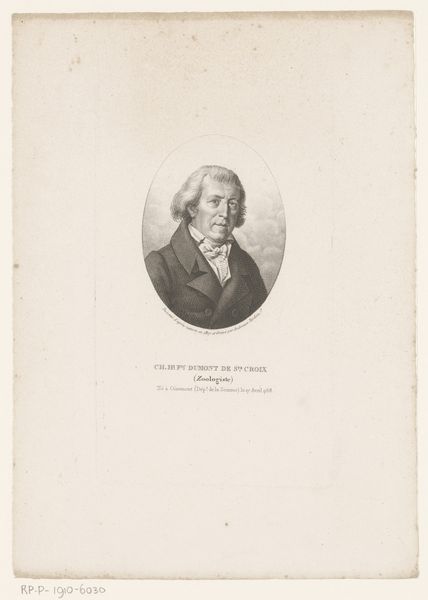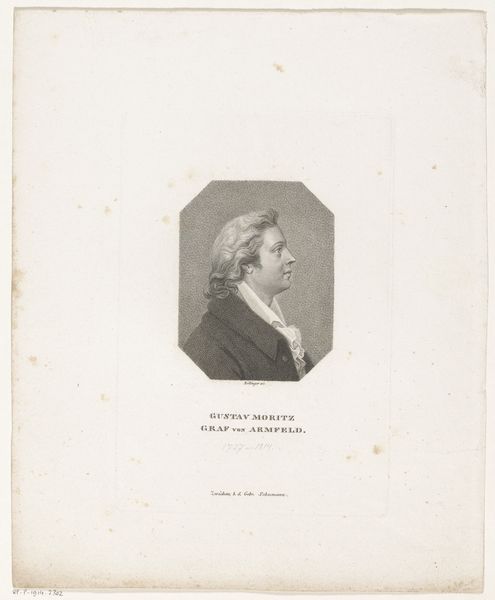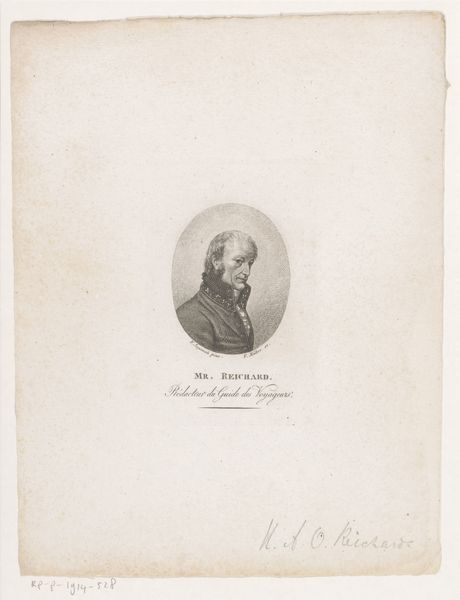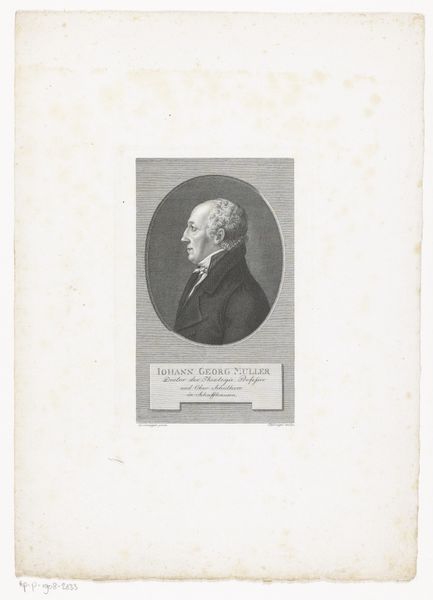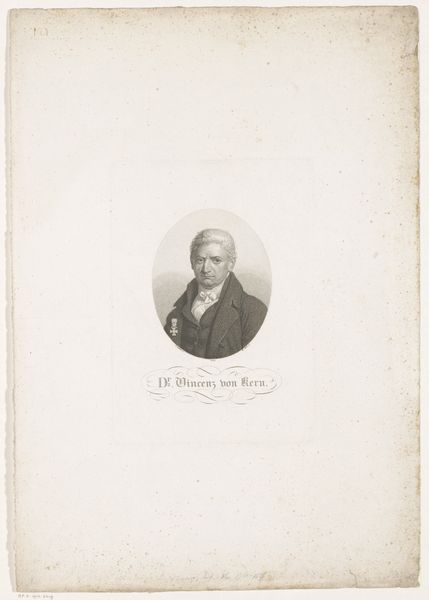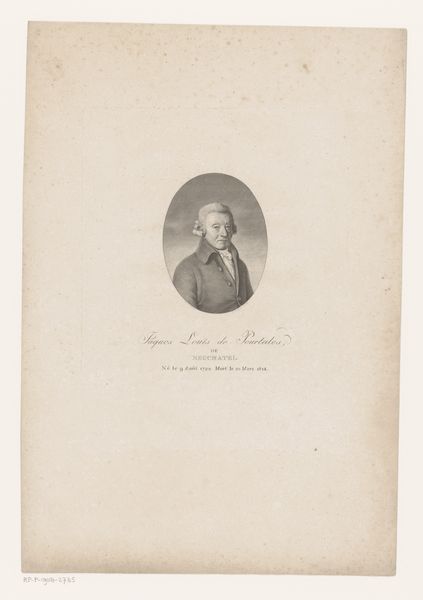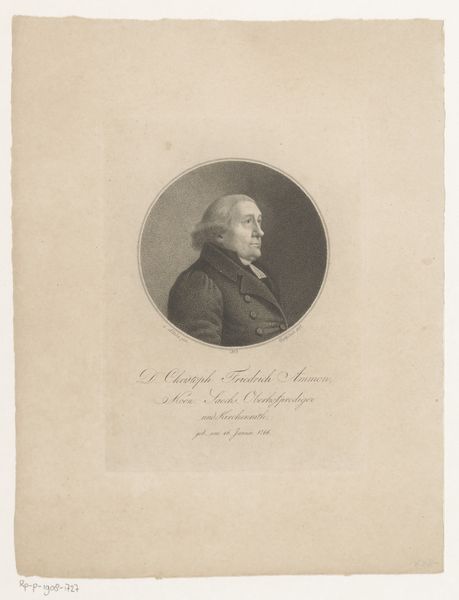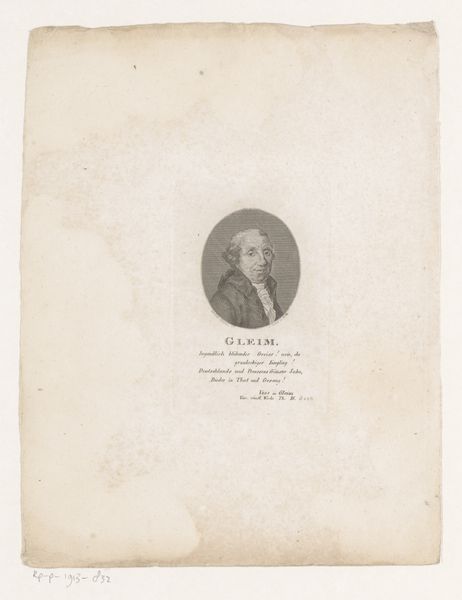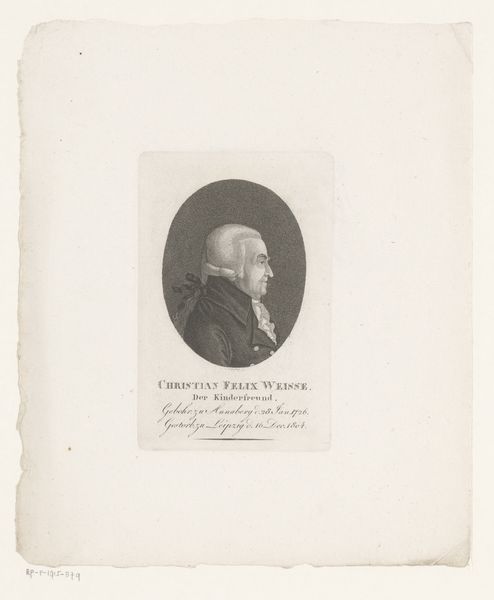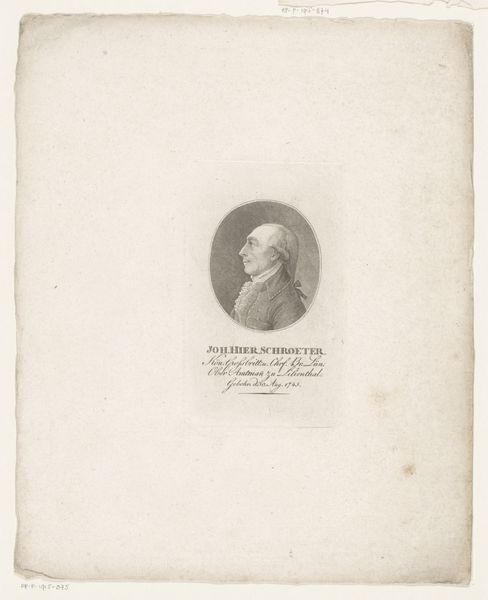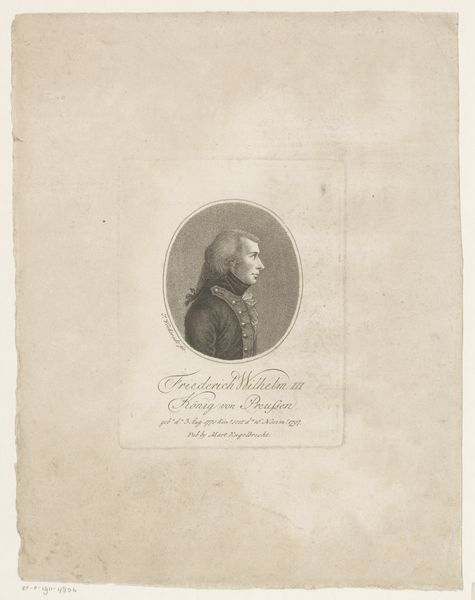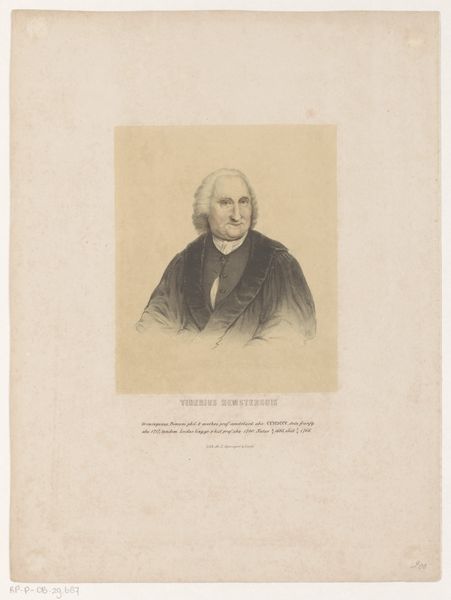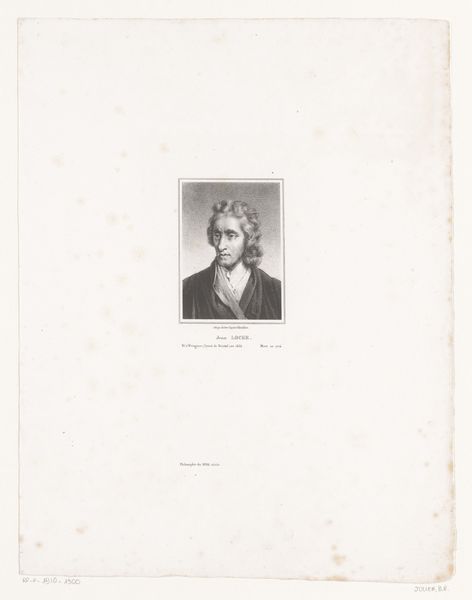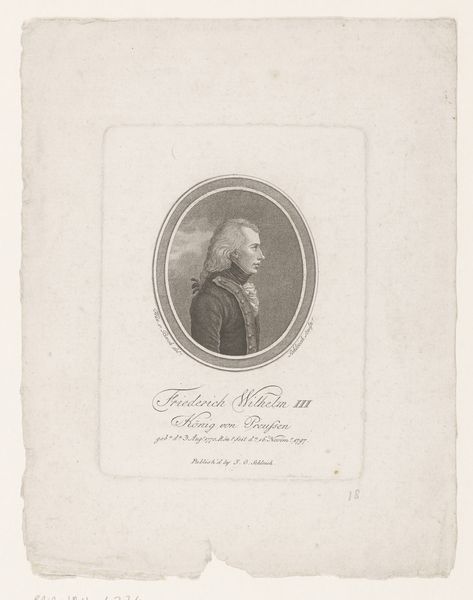
print, paper, engraving
portrait
neoclacissism
old engraving style
paper
engraving
realism
Dimensions: height 225 mm, width 163 mm
Copyright: Rijks Museum: Open Domain
Curator: Here we have a portrait of Thomas Miller, a bookseller in Bungay, Suffolk. It was rendered between 1804 and 1841. Editor: It's an engraving, isn't it? The linework is so precise, yet there's a softness to the overall effect, particularly around the face. There's a very self-assured air in the eyes. Curator: Yes, this is an engraving, precisely made by Edward Scriven. I think it offers insight into the role of the provincial bookseller in the social fabric of the time. Booksellers, in that period, played a vital part in the circulation of knowledge and shaping of public opinion, and that access wasn’t available for everyone. Who had access and who was denied? Editor: From a compositional standpoint, it's a classical bust portrait, very clean and focused. I notice the oval border immediately centers your attention and then emphasizes the figure. The inscription provides further clarity about his profession and location. Curator: The inclusion of "Bungay, Suffolk" is indeed crucial, placing Miller within a specific community, an active participant in its cultural landscape. He was more than a bookseller; he was likely an intellectual hub. Editor: What's particularly compelling is how the engraver uses only line and tone to describe the textures of the face, hair, and clothing, and this technique lends a tactile quality to the representation of his materiality. Curator: Absolutely, and to consider his posture, it communicates respectability and a certain level of societal standing. It speaks of class and perhaps even touches upon the emergent middle class in the Regency era and their aspirations. How would Miller see himself represented this way? Editor: His social aspiration, I think, is also carefully emphasized through composition and rendering as much as possible to reveal a figure, someone aware of his placement in that small microcosm, and of his cultural weight. Curator: Ultimately, I am reminded of the value and place of those small business operators who operated at the outskirts of town at a time where the collective cultural perspective was heavily influenced by people in London, Paris or Rome. Editor: Yes, reflecting on the way Scriven captures Thomas Miller, he manages to imbue this printed portrait with so much of his subject’s own character.
Comments
No comments
Be the first to comment and join the conversation on the ultimate creative platform.
